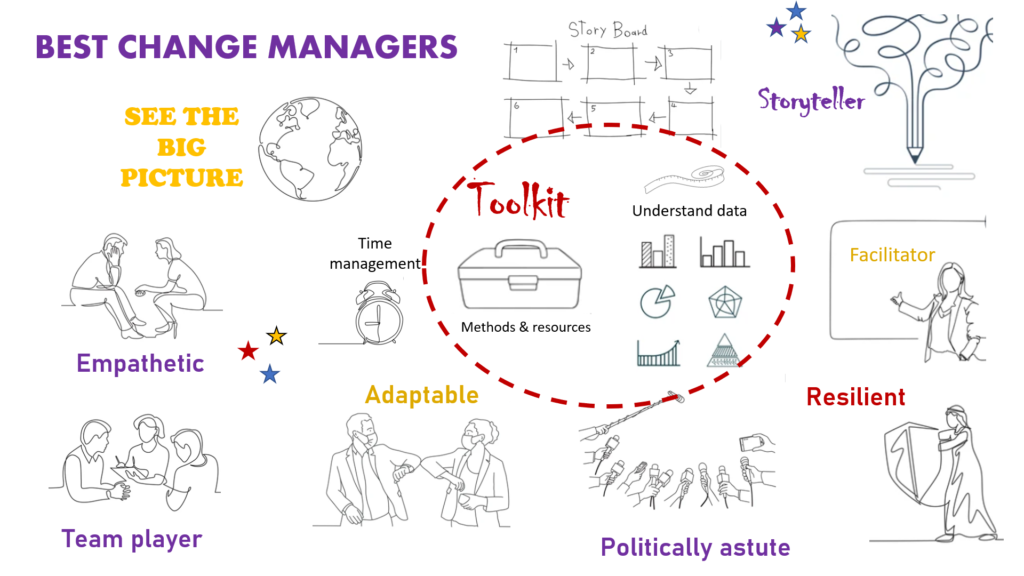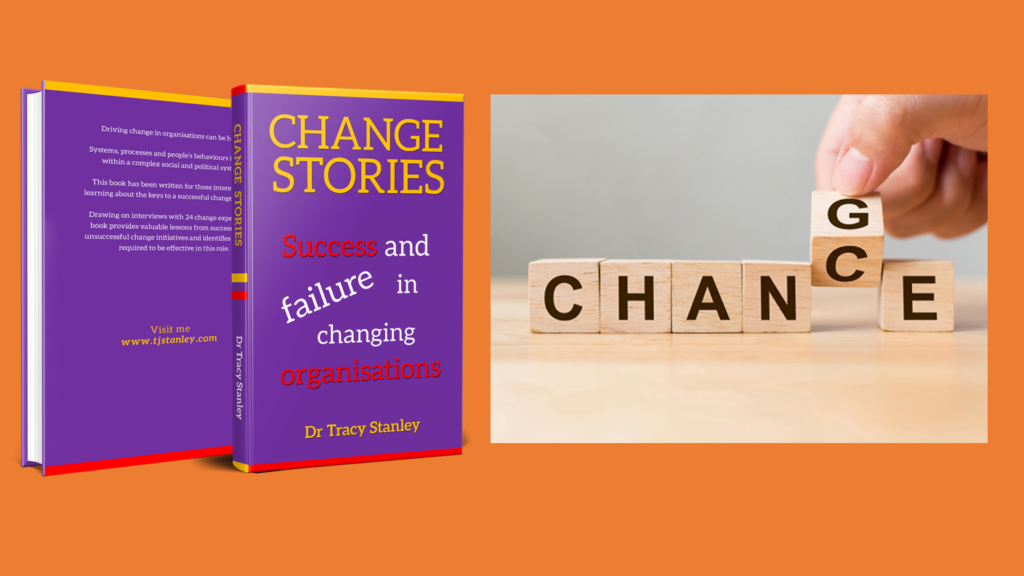
It was not my intention in writing Change Stories to discuss the myriad of processes, tools and templates that a change manager carries in their metaphorical tool kit. I told all my interviewers that I only wanted to hear their stories. Well, as things go, tools, templates and processes were frequently mentioned in our interviews so I decided to include a section on them in my book.
Some of the favourite resources mentioned follow along with a few interviewee comments. They are listed in alphabetical order.
Causal Effect Modelling are mathematical models representing relationships within an individual system or population which facilitate inferences about causal relationships.
When I was running design teams, I would have technical people with me, that were jumping to the solution very quickly. Part of my job was to stop that and to say that we are not yet at the point. We need to keep analysing the problems. Because when you keep analysing problems more deeply, you see what you thought was the problem may not have been the problem. Neil
Competing Values Framework, developed by Robert Quinn and Kim Cameron, provides a classification of four corporate cultures, giving insight into how a company operates, how employees collaborate and what the corporate values are.
Design Thinking/Human Centred Design has a deep focus on understanding the people, (or users) for whom the products or services are being designed. It uses an iterative process to understand users, challenge assumptions and redefine problems, and is most useful for tackling ill-defined problems. It has five phases: Empathise, Define, Ideate, Prototype and Test.
Helps you to focus on employee experience. Takes you through the phases including developing personas of different employee groups, mapping the moments that matter and then developing a prototype. Elaine
McKinsey’s Seven S Model is a tool that analyses an organisation by looking at seven key internal elements: strategy, structure, systems, shared values, style, staff, and skills.
Microsoft Teams allows team conversations, files, meeting creation, and apps to be together in a single shared workspace, and you can take it with you on your favourite mobile device.
Net Promotor Score is a tool that measures customer experience.
Obeya is a lean concept that focuses on setting up a physical space where you strategize and plan your projects. Obeya helps you to generate ideas, collaborate with management and stakeholders, and gain a full overview of the projects and any problems that need to be resolved.
Obeya means big room in Japanese. The idea is to bring people involved with all parts of a production process into one place so that they meet face to face to improve communication and prevent compartmentalising or phasing work to homogeneous departments. Lyn
OCI is an Organisational Culture Inventory that shows how employees interact with each other, what they have in common, and what is expected of them in terms of behaviour. Behavioural standards influence productivity and effectiveness in the long term, as well as the engagement of each employee individually.
OCAI (Organisational Cultural Assessment Inventory) is a cultural assessment toolbased on the Competing Values Framework and is a quick culture tool where you distribute 100 points between four Competing Values.
Prosci is a change management methodology developed by the consulting firm of the same name. Prosci’s model of individual change is called the Prosci ADKAR Model, an acronym for awareness, desire, knowledge, ability, and reinforcement.
Pulse check isa short, quick survey that is sent out to employees on a regular basis. It is essentially a check-in, providing a pulse check on topics such as communication or employee satisfaction. Usually its limited number of questions makes it quick and easy to complete the survey. It can be a key measure of employee attitudes during change programs.
We used pulse checks. Their managers were constantly communicating the changes to them, to get them on board, what it means for employees to do what they do throughout the change. What I mean by that is, that it’s not just to communicate with them, but to engage with them. Ingrid
RACI Chart is a matrix of all the activities or decision-making authorities undertaken in an organisation set against all the people or roles. At each intersection of activity and role it’s possible to assign somebody responsible, accountable, consulted or informed for that activity or decision.
Scenarios. If you talk about a likely or possible scenario, you are talking about the way in which a situation may develop. You can then think through how you might respond.
Stakeholders and Decision Making. A stakeholderis a person or group who is affected, either negatively or positively by successful project completion.
I’ll send that out to make sure the key stakeholders are across it, I’ll meet with them if I need to talk it out, looking at some of the board minutes which make it look like it was a really short discussion. Here was the issue. Here was the decision. The paperwork behind it is where the detail is. Most people don’t want to read the details. But the project registered decisions within an Excel-based tool. It doesn’t matter what the tool is. We have a registered system and we record the key decisions and then we’ve got documentary evidence with the detail around what the issue was, what the options were, what the decision was. Lionel
Steering committee is the most senior decision-making body on a project.
There was a steering committee, with representatives from the different areas and we had regular sessions with project updates for about nine months. Neville
Survey Monkey is an online survey tool that enables the creation and management of professional online surveys.
Systems Thinking is a holistic and analytical approach to organisational analysis that focuses on the way that a system’s parts interrelate.
I’ll be speaking about the key lessons learned from writing Change Stories, at the Agile Women’s Meetup at 16:30 QLD time on the 16 November. You can register to join the conversation here.
And you can pick up your copy of Change Stories: Success and Failure in changing organisations here.
